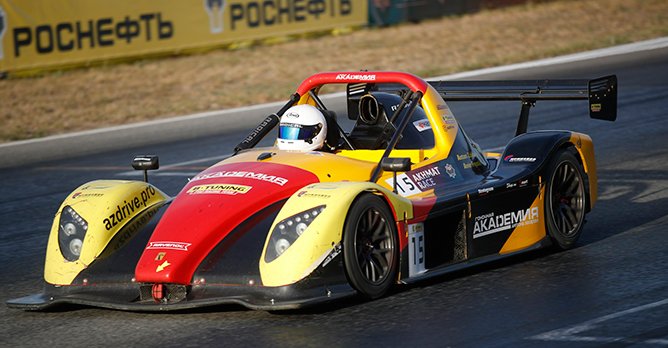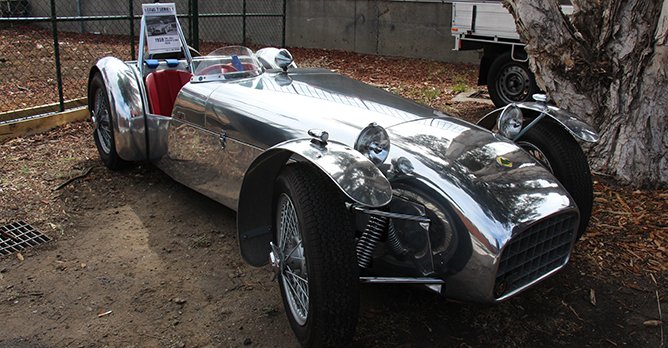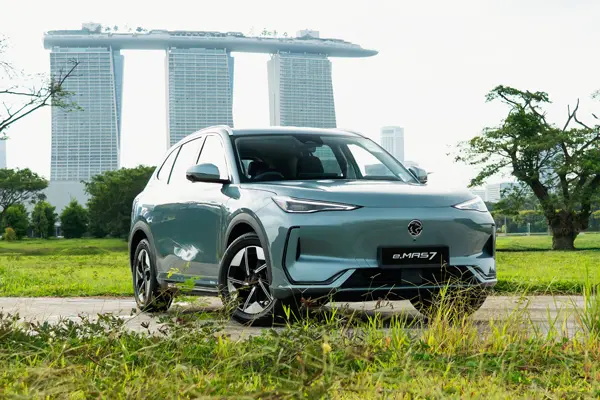Track day special - what is it, and why do we want one?
11 Oct 2022|6,164 views
Have you ever read about some really radical-looking cars that look like they have no place on a public road? Something that doesn't have a windscreen, or a car that doesn't have any doors - something like a Lotus Super Seven or a Caterham (we have a couple of these on Singapore roads) or the recently launched BAC Mono R?
Well, these are the cars that are commonly referred to as 'track day specials'. If you have been intrigued by the idea of these cars and wondered what exactly their proposition in the motoring world is, read on to find out more.
Purpose built for speed, performance and maximum enjoyment
The dream of many car enthusiasts is to jump into a race car and take it for a couple of rounds in the track, and a 'track day special', something like an Ariel Atom, KTM X-Bow, BAC Mono or the Radical SR3, is just that.
In sporty, exuberant driving, comfort takes the backseat, and on these machines, there aren't even any backseats to speak of…
Unlike passenger cars, which are designed with versatility in mind, these track specials exist almost entirely for lapping circuits while providing the highest level of driver engagement and enjoyment. And some of these, such as the Radical SR3 are basically race-ready turnkey solutions. With one of these machines, you can choose to use it for leisurely track sessions, or even join one of the Radical Cup races taking place all over the world if you are into serious racing.
High performance through simplification - less is more
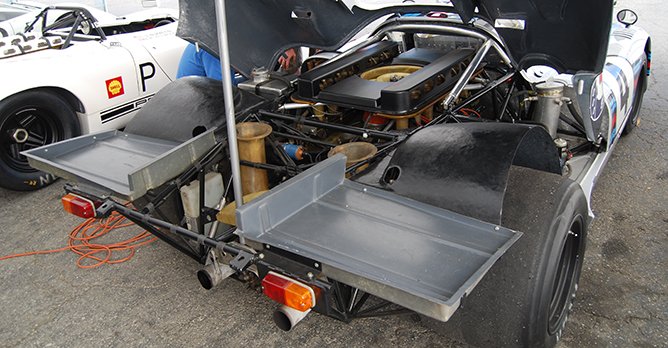
 Like the legendary Porsche 917 and many other purpose-built race cars, track day specials usually feature a space frame chassis as well Modern performance cars often pack high-tech features and utilise cutting-edge engineering to put out plenty of power, all while remaining easy and safe to drive on the roads. 'Track day specials', however, approach the matter very differently.
Like the legendary Porsche 917 and many other purpose-built race cars, track day specials usually feature a space frame chassis as well Modern performance cars often pack high-tech features and utilise cutting-edge engineering to put out plenty of power, all while remaining easy and safe to drive on the roads. 'Track day specials', however, approach the matter very differently.
Due to the nature of these track-oriented cars, there's no need for fancy features such as driver aids and complicated powertrains to produce gobs of power.
Instead, the idea is to offer performance through simplification. These cars tend to be extremely light - all amenities deemed unnecessary for performance driving wouldn't be included - including windscreens or any windows.
At the centre of these race-ready track cars is usually a space frame chassis built out of sturdy tubings. This is not unlike what you'll find in the higher echelons of racing. Examples such as the legendary Porsche 917 and other Le Mans Prototypes come to mind. As a result you get a stiff and rigid chassis that is also extremely lightweight.
Engines don't usually need to be extremely powerful to achieve impressive performance in these lightweight machines. The original Lotus Seven, which formed the basis for the later Caterham Seven cars, only had 40bhp.
In fact, even the BAC Mono R that was recently launched here only has 340bhp - a paltry figure considering how a hot hatch like the AMG A45 S makes 416bhp. But, the low weight of just 555kg allows the Mono R to have a power-to-weight ratio of 618bhp per tonne (a hyper car such as the Mclaren P1 only has 523bhp per tonne in comparison).
Affordable performance
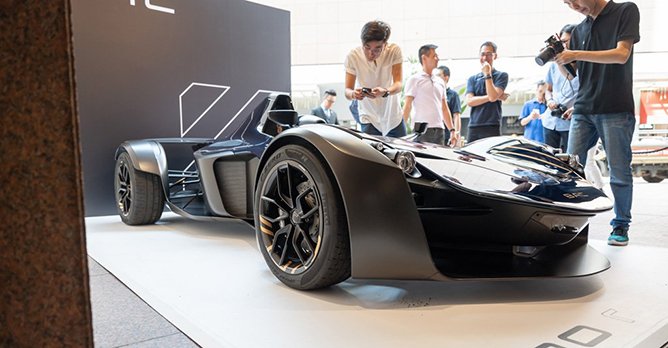
 While they aren't exactly cheap, track day specials offer hypercar beating performance at a fraction of the cost While affordable and race car or track toy doesn't really seem to work in the same sentence, in the grand scheme of things, 'track day specials' do in fact offer an affordable option for performance.
While they aren't exactly cheap, track day specials offer hypercar beating performance at a fraction of the cost While affordable and race car or track toy doesn't really seem to work in the same sentence, in the grand scheme of things, 'track day specials' do in fact offer an affordable option for performance.
Taking the same two cars mentioned above for comparison, the Mono R is priced around $500,000 here, while the price of a Mclaren P1 was well over a million dollars.
Without the need for excessive features and other amenities for comfort and convenience, manufacturers are able to cut down on cost, directing it all towards performance.
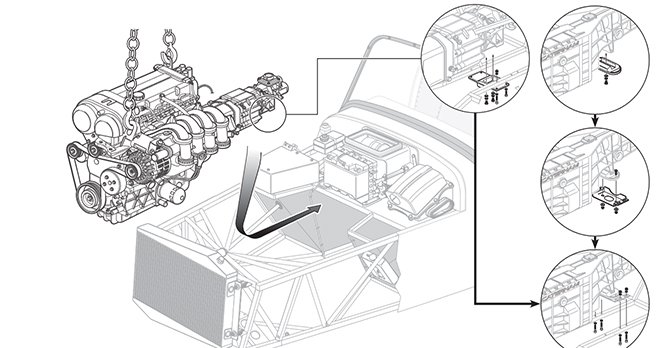
 In line with the ethos of keeping costs down, the Caterham Seven is still available as a self-built kit In fact, cars like the Caterham Seven and the original Lotus Seven were originally introduced as kit cars. When bought in kit form, the buyers will have to put the car together themselves, keeping cost to a minimum.
In line with the ethos of keeping costs down, the Caterham Seven is still available as a self-built kit In fact, cars like the Caterham Seven and the original Lotus Seven were originally introduced as kit cars. When bought in kit form, the buyers will have to put the car together themselves, keeping cost to a minimum.
When offered as a kit, the original Lotus Seven was even able to avoid a Purchase Tax surcharge in the U.K. during its early years, offering plenty of value.
Without the need for an extremely huge and powerful engine, cost can once again be kept manageable. The end result is supercar performance, but at a fraction of the cost.
An experience like no other
If you think these are just barebones, cut-rate supercars meant for those on a budget, you couldn't be more wrong.
In fact, these machines are exactly what purists and track day aficionados love - it is all about the driving. And these things, with their lightness, and exposed nature subject the driver to a raw driving experience that can't be matched by even the most exotic hypercars. Sometimes, sheer speed isn't everything, fun is.
Enjoyed reading this? Here are some articles that you might be interested in:
Here's a sacred list of the most Instagrammed cars of 2022
These are some of the most coolest car instrument clusters ever made
Cars we want to see revived before the world goes all-electric
These are some of the best colours on a car you can get right from the factory
Well, these are the cars that are commonly referred to as 'track day specials'. If you have been intrigued by the idea of these cars and wondered what exactly their proposition in the motoring world is, read on to find out more.
Purpose built for speed, performance and maximum enjoyment
The dream of many car enthusiasts is to jump into a race car and take it for a couple of rounds in the track, and a 'track day special', something like an Ariel Atom, KTM X-Bow, BAC Mono or the Radical SR3, is just that.
In sporty, exuberant driving, comfort takes the backseat, and on these machines, there aren't even any backseats to speak of…
Unlike passenger cars, which are designed with versatility in mind, these track specials exist almost entirely for lapping circuits while providing the highest level of driver engagement and enjoyment. And some of these, such as the Radical SR3 are basically race-ready turnkey solutions. With one of these machines, you can choose to use it for leisurely track sessions, or even join one of the Radical Cup races taking place all over the world if you are into serious racing.
High performance through simplification - less is more

Due to the nature of these track-oriented cars, there's no need for fancy features such as driver aids and complicated powertrains to produce gobs of power.
Instead, the idea is to offer performance through simplification. These cars tend to be extremely light - all amenities deemed unnecessary for performance driving wouldn't be included - including windscreens or any windows.
At the centre of these race-ready track cars is usually a space frame chassis built out of sturdy tubings. This is not unlike what you'll find in the higher echelons of racing. Examples such as the legendary Porsche 917 and other Le Mans Prototypes come to mind. As a result you get a stiff and rigid chassis that is also extremely lightweight.
Engines don't usually need to be extremely powerful to achieve impressive performance in these lightweight machines. The original Lotus Seven, which formed the basis for the later Caterham Seven cars, only had 40bhp.
In fact, even the BAC Mono R that was recently launched here only has 340bhp - a paltry figure considering how a hot hatch like the AMG A45 S makes 416bhp. But, the low weight of just 555kg allows the Mono R to have a power-to-weight ratio of 618bhp per tonne (a hyper car such as the Mclaren P1 only has 523bhp per tonne in comparison).
Affordable performance

Taking the same two cars mentioned above for comparison, the Mono R is priced around $500,000 here, while the price of a Mclaren P1 was well over a million dollars.
Without the need for excessive features and other amenities for comfort and convenience, manufacturers are able to cut down on cost, directing it all towards performance.

When offered as a kit, the original Lotus Seven was even able to avoid a Purchase Tax surcharge in the U.K. during its early years, offering plenty of value.
Without the need for an extremely huge and powerful engine, cost can once again be kept manageable. The end result is supercar performance, but at a fraction of the cost.
An experience like no other
If you think these are just barebones, cut-rate supercars meant for those on a budget, you couldn't be more wrong.
In fact, these machines are exactly what purists and track day aficionados love - it is all about the driving. And these things, with their lightness, and exposed nature subject the driver to a raw driving experience that can't be matched by even the most exotic hypercars. Sometimes, sheer speed isn't everything, fun is.
Enjoyed reading this? Here are some articles that you might be interested in:
Here's a sacred list of the most Instagrammed cars of 2022
These are some of the most coolest car instrument clusters ever made
Cars we want to see revived before the world goes all-electric
These are some of the best colours on a car you can get right from the factory
Have you ever read about some really radical-looking cars that look like they have no place on a public road? Something that doesn't have a windscreen, or a car that doesn't have any doors - something like a Lotus Super Seven or a Caterham (we have a couple of these on Singapore roads) or the recently launched BAC Mono R?
Well, these are the cars that are commonly referred to as 'track day specials'. If you have been intrigued by the idea of these cars and wondered what exactly their proposition in the motoring world is, read on to find out more.
Purpose built for speed, performance and maximum enjoyment
The dream of many car enthusiasts is to jump into a race car and take it for a couple of rounds in the track, and a 'track day special', something like an Ariel Atom, KTM X-Bow, BAC Mono or the Radical SR3, is just that.
In sporty, exuberant driving, comfort takes the backseat, and on these machines, there aren't even any backseats to speak of…
Unlike passenger cars, which are designed with versatility in mind, these track specials exist almost entirely for lapping circuits while providing the highest level of driver engagement and enjoyment. And some of these, such as the Radical SR3 are basically race-ready turnkey solutions. With one of these machines, you can choose to use it for leisurely track sessions, or even join one of the Radical Cup races taking place all over the world if you are into serious racing.
High performance through simplification - less is more

 Like the legendary Porsche 917 and many other purpose-built race cars, track day specials usually feature a space frame chassis as well Modern performance cars often pack high-tech features and utilise cutting-edge engineering to put out plenty of power, all while remaining easy and safe to drive on the roads. 'Track day specials', however, approach the matter very differently.
Like the legendary Porsche 917 and many other purpose-built race cars, track day specials usually feature a space frame chassis as well Modern performance cars often pack high-tech features and utilise cutting-edge engineering to put out plenty of power, all while remaining easy and safe to drive on the roads. 'Track day specials', however, approach the matter very differently.
Due to the nature of these track-oriented cars, there's no need for fancy features such as driver aids and complicated powertrains to produce gobs of power.
Instead, the idea is to offer performance through simplification. These cars tend to be extremely light - all amenities deemed unnecessary for performance driving wouldn't be included - including windscreens or any windows.
At the centre of these race-ready track cars is usually a space frame chassis built out of sturdy tubings. This is not unlike what you'll find in the higher echelons of racing. Examples such as the legendary Porsche 917 and other Le Mans Prototypes come to mind. As a result you get a stiff and rigid chassis that is also extremely lightweight.
Engines don't usually need to be extremely powerful to achieve impressive performance in these lightweight machines. The original Lotus Seven, which formed the basis for the later Caterham Seven cars, only had 40bhp.
In fact, even the BAC Mono R that was recently launched here only has 340bhp - a paltry figure considering how a hot hatch like the AMG A45 S makes 416bhp. But, the low weight of just 555kg allows the Mono R to have a power-to-weight ratio of 618bhp per tonne (a hyper car such as the Mclaren P1 only has 523bhp per tonne in comparison).
Affordable performance

 While they aren't exactly cheap, track day specials offer hypercar beating performance at a fraction of the cost While affordable and race car or track toy doesn't really seem to work in the same sentence, in the grand scheme of things, 'track day specials' do in fact offer an affordable option for performance.
While they aren't exactly cheap, track day specials offer hypercar beating performance at a fraction of the cost While affordable and race car or track toy doesn't really seem to work in the same sentence, in the grand scheme of things, 'track day specials' do in fact offer an affordable option for performance.
Taking the same two cars mentioned above for comparison, the Mono R is priced around $500,000 here, while the price of a Mclaren P1 was well over a million dollars.
Without the need for excessive features and other amenities for comfort and convenience, manufacturers are able to cut down on cost, directing it all towards performance.

 In line with the ethos of keeping costs down, the Caterham Seven is still available as a self-built kit In fact, cars like the Caterham Seven and the original Lotus Seven were originally introduced as kit cars. When bought in kit form, the buyers will have to put the car together themselves, keeping cost to a minimum.
In line with the ethos of keeping costs down, the Caterham Seven is still available as a self-built kit In fact, cars like the Caterham Seven and the original Lotus Seven were originally introduced as kit cars. When bought in kit form, the buyers will have to put the car together themselves, keeping cost to a minimum.
When offered as a kit, the original Lotus Seven was even able to avoid a Purchase Tax surcharge in the U.K. during its early years, offering plenty of value.
Without the need for an extremely huge and powerful engine, cost can once again be kept manageable. The end result is supercar performance, but at a fraction of the cost.
An experience like no other
If you think these are just barebones, cut-rate supercars meant for those on a budget, you couldn't be more wrong.
In fact, these machines are exactly what purists and track day aficionados love - it is all about the driving. And these things, with their lightness, and exposed nature subject the driver to a raw driving experience that can't be matched by even the most exotic hypercars. Sometimes, sheer speed isn't everything, fun is.
Enjoyed reading this? Here are some articles that you might be interested in:
Here's a sacred list of the most Instagrammed cars of 2022
These are some of the most coolest car instrument clusters ever made
Cars we want to see revived before the world goes all-electric
These are some of the best colours on a car you can get right from the factory
Well, these are the cars that are commonly referred to as 'track day specials'. If you have been intrigued by the idea of these cars and wondered what exactly their proposition in the motoring world is, read on to find out more.
Purpose built for speed, performance and maximum enjoyment
The dream of many car enthusiasts is to jump into a race car and take it for a couple of rounds in the track, and a 'track day special', something like an Ariel Atom, KTM X-Bow, BAC Mono or the Radical SR3, is just that.
In sporty, exuberant driving, comfort takes the backseat, and on these machines, there aren't even any backseats to speak of…
Unlike passenger cars, which are designed with versatility in mind, these track specials exist almost entirely for lapping circuits while providing the highest level of driver engagement and enjoyment. And some of these, such as the Radical SR3 are basically race-ready turnkey solutions. With one of these machines, you can choose to use it for leisurely track sessions, or even join one of the Radical Cup races taking place all over the world if you are into serious racing.
High performance through simplification - less is more

Due to the nature of these track-oriented cars, there's no need for fancy features such as driver aids and complicated powertrains to produce gobs of power.
Instead, the idea is to offer performance through simplification. These cars tend to be extremely light - all amenities deemed unnecessary for performance driving wouldn't be included - including windscreens or any windows.
At the centre of these race-ready track cars is usually a space frame chassis built out of sturdy tubings. This is not unlike what you'll find in the higher echelons of racing. Examples such as the legendary Porsche 917 and other Le Mans Prototypes come to mind. As a result you get a stiff and rigid chassis that is also extremely lightweight.
Engines don't usually need to be extremely powerful to achieve impressive performance in these lightweight machines. The original Lotus Seven, which formed the basis for the later Caterham Seven cars, only had 40bhp.
In fact, even the BAC Mono R that was recently launched here only has 340bhp - a paltry figure considering how a hot hatch like the AMG A45 S makes 416bhp. But, the low weight of just 555kg allows the Mono R to have a power-to-weight ratio of 618bhp per tonne (a hyper car such as the Mclaren P1 only has 523bhp per tonne in comparison).
Affordable performance

Taking the same two cars mentioned above for comparison, the Mono R is priced around $500,000 here, while the price of a Mclaren P1 was well over a million dollars.
Without the need for excessive features and other amenities for comfort and convenience, manufacturers are able to cut down on cost, directing it all towards performance.

When offered as a kit, the original Lotus Seven was even able to avoid a Purchase Tax surcharge in the U.K. during its early years, offering plenty of value.
Without the need for an extremely huge and powerful engine, cost can once again be kept manageable. The end result is supercar performance, but at a fraction of the cost.
An experience like no other
If you think these are just barebones, cut-rate supercars meant for those on a budget, you couldn't be more wrong.
In fact, these machines are exactly what purists and track day aficionados love - it is all about the driving. And these things, with their lightness, and exposed nature subject the driver to a raw driving experience that can't be matched by even the most exotic hypercars. Sometimes, sheer speed isn't everything, fun is.
Enjoyed reading this? Here are some articles that you might be interested in:
Here's a sacred list of the most Instagrammed cars of 2022
These are some of the most coolest car instrument clusters ever made
Cars we want to see revived before the world goes all-electric
These are some of the best colours on a car you can get right from the factory
Thank You For Your Subscription.






